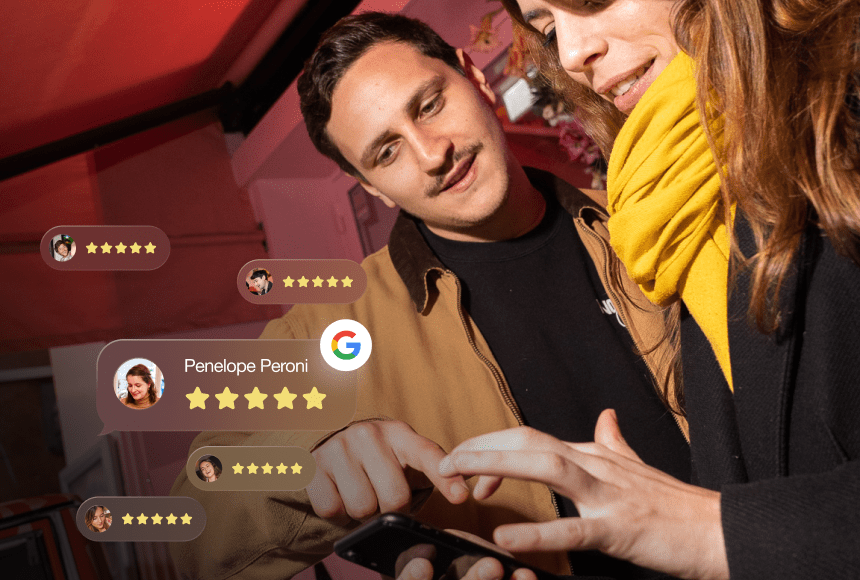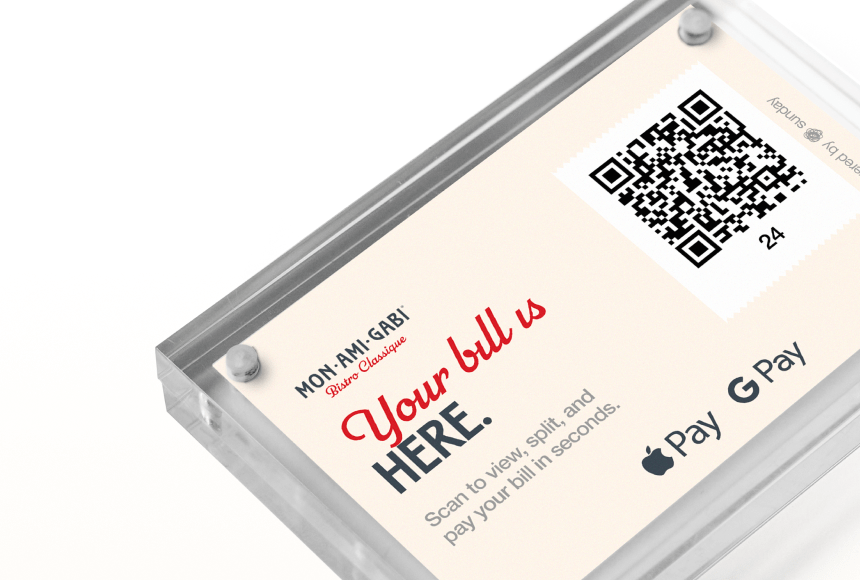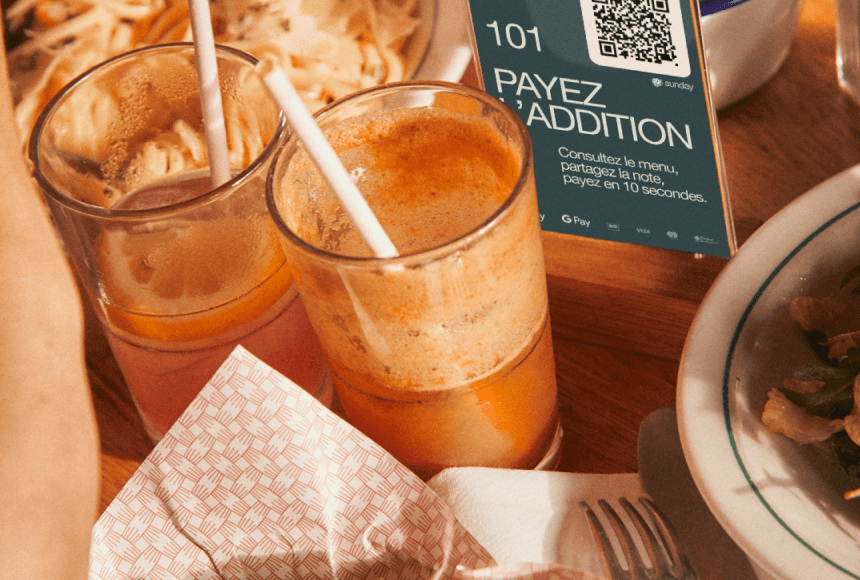
Elevate Your Restaurant with a Perfectly Polished Google Business Profile
Why Your Google Business Profile Matters
Think of your Google Business Profile as the digital equivalent of an inviting store sign outside your restaurant. It helps hungry potential customers find you, check your menu, read reviews, and decide if your ambiance fits the meal they’ve been craving. According to Social Media Today, 46% of all Google searches have local intent. That means millions of people in your neighborhood—and beyond—are on the lookout for nearby spots to eat every single day. If your listing is incomplete, outdated, or missing, you risk being skipped over by these hungry searchers.
For restaurateurs in the United States, a well-maintained Google Business Profile is a high-impact, no-brainer strategy to rise above the competition. Visibility leads to foot traffic, foot traffic leads to sales, and the right first impression can turn a one-time diner into a devoted regular. But how do you optimize this valuable piece of digital real estate effectively? That’s exactly what we’re about to cover.
Claiming and Verifying Your Listing
Before you optimize anything, you need to ensure ownership of your Google Business Profile. Claiming your listing is like registering your restaurant on the map—literally. If you haven’t done so already, visit Google’s official Business Profile page, log in with your Google account, and follow the prompts to claim your restaurant. Google will ask you to verify your business by phone, text, email, or postcard. This crucial step helps confirm you’re the rightful owner, preventing unauthorized changes and misinformation.
Once you’ve verified your profile, you can take control of the details that potential customers see. Think of it as a well-structured recipe: each ingredient (business hours, address, photos, reviews) matters. Combine them skillfully, and your restaurant’s digital presence can become irresistible to anyone browsing for their next meal.
Perfecting the Basics: Key Fields to Update
Just like a classic American burger, your Google Business Profile has core components that need to be cooked to perfection. Neglecting any of these elements can leave your listing looking incomplete or stale. Let’s break down these essential fields step by step.
1. Business Name
Your restaurant’s name is its identity. Be sure to use the exact same name that you display on your signage, website, and social media. Inconsistent naming can confuse customers and Google’s search algorithm. Avoid stuffing extra keywords, like “Best BBQ in Texas,” into the name field—that can violate Google’s guidelines and hurt your ranking rather than help it.
2. Address and Phone Number
If people can’t find you in real life, your digital presence won’t do you much good. Confirm that your address is accurate and pinned correctly on Google Maps. Provide a direct phone number where someone can answer promptly or an automated system can take reservations. Also, maintain consistency in your NAP (Name, Address, Phone Number) across your website and third-party sites—search engines love this consistency.
3. Business Hours
Under- or overcooked business hours frustrate potential customers. If your real hours are 8 AM to 8 PM but Google says you close at 5 PM, you can bet you’ll lose potential diners. Remember to update hours for holidays, special events, or unexpected closures. Clear, correct hours improve your credibility and show that you care about people’s time.
4. Website and Menu Links
Your website is the ultimate resource for someone who wants to dive deeper into your restaurant’s story, so link it directly. If you use a separate link for your online menu, add that too. Potential customers often want to scan your offerings quickly—especially if they have dietary preferences or allergies. The easier you make it to access your menu, the more likely you are to draw them in.
5. Category and Attributes
Categories are the “cuisine type” or broad theme that helps define your restaurant—Mexican, Italian, American, or maybe a fusion. Select the most accurate primary category and add extra categories if they apply. Meanwhile, attributes are the finishing touches: do you offer “Outdoor seating”? Are you “LGBTQ+ friendly”? Does your spot have “Free Wi-Fi”? These attributes help searchers filter and find exactly what they’re looking for.
Showcasing Your Restaurant with Visuals
Let’s be honest: people eat with their eyes first. An appetizing photo of your signature dish or the cozy interior of your dining area can tip the scale in your favor. According to Google, listings with photos see 35% more clicks to their website and 42% higher requests for driving directions compared to those without.
Here’s how to make your images pop:
- Profile Picture: Display your logo or a catchy exterior shot of your restaurant. This is your brand’s first impression—make it count.
- Cover Photo: An inviting interior shot or a hero image of your most popular dish works wonders.
- Add Regularly: Keep your listing fresh by uploading new photos of special events, seasonal dishes, or updated decor.
Professional photography can go a long way, but well-lit smartphone photos can also be highly effective. Just make sure they’re clear and reflect the real dining experience you provide.
Encouraging Customer Reviews—and Responding to Them
Reviews can make or break a diner’s decision to choose your spot over the restaurant next door. Encouraging genuine reviews is like harvesting fresh ingredients. The more high-quality feedback you have, the stronger your listing becomes. Positive reviews build social proof, while even a negative review—handled professionally—can showcase your customer service skills.
Here are some ways to encourage and manage reviews:
- Ask Politely: After a satisfying meal, request a review. But do it with genuine warmth—nobody enjoys a pushy ask.
- Use a QR Code: Tools like sunday let your customers pay via QR code on their table. When the payment is complete, consider offering a friendly nudge for a review or a tip. This kind of seamless experience often translates to more positive feedback.
- Reply Promptly: Show gratitude for praise and address complaints calmly and efficiently. Your public responses reflect your restaurant’s tone and brand values.
According to BrightLocal’s Local Consumer Review Survey, 79% of consumers trust online reviews as much as personal recommendations. That’s the power of a well-managed review strategy.
Using Posts to Engage Diners
Google Business “Posts” function as mini-updates you can share with prospective customers—like special offers, new menu items, or upcoming events. Think of them as the free sample station in a grocery store: short, enticing, and designed to whet the appetite of passing customers. Add a call-to-action button like “Order Now” or “Book a Table” to drive immediate action.
When you create a post, use clear imagery or even a short video. Keep the text concise but full of flavor. For instance, if you just added a seasonal pumpkin spice dessert, post a mouthwatering photo and invite people to drop by for a taste before it’s gone.
Leveraging Insights to Refine Your Strategy
Just like a chef checks each dish for taste balance, you should regularly review your Google Business Profile insights to see how potential diners interact with your listing. Within your account, you’ll find data on:
- Search Queries: Discover which keywords bring people to your listing.
- Customer Actions: How many people request directions? Visit your website? Call your number?
- Photo Views: Gauge the popularity of your images and see if they need refreshing.
- Popular Times: Identify peak hours to staff up accordingly.
These insights act like feedback from the kitchen. Use them to fine-tune your Google Business Profile strategy. If you notice that your “vegan restaurant” keyword is doing well, maybe it’s time to showcase more plant-based dishes or add relevant attributes.
Integrating Your Google Business Profile with a Streamlined Payment Experience
Optimization doesn’t stop at your listing. It should also extend into your dining room or drive-through window. The faster and more enjoyable the entire experience is, the more likely customers are to leave a glowing review.
In many restaurants, payment can be a bottleneck. But it doesn’t have to be. With sunday’s QR code payment solution, guests can pay right from the table in seconds—no waiting for the check, no chasing down a server, no fuss. What does that have to do with your Google Business Profile? When diners have a smooth, positive experience, they’re more inclined to share their delight online. And because sunday also prompts them to leave a Google review or a tip, you get an instant, organic push toward building a stronger digital presence.
Plus, the less time your staff spends running credit cards, the more time they can dedicate to delivering stellar hospitality and encouraging that final friendly nudge: “If you had a great time, feel free to leave us a review on Google.”
Staying Compliant with Google’s Guidelines
Don’t let a misguided shortcut jeopardize your hard work. Google has strict guidelines to maintain the quality and integrity of business listings. Violations—like keyword stuffing, fake reviews, or misrepresentation—can lead to warnings, suspensions, or worse.
So keep it real. Provide accurate information, invite authentic feedback, and stay mindful of Google’s policies. Cheating may offer short-term gains, but the long-term fallout is rarely worth it—especially for a restaurant looking to build genuine, lasting relationships with its community.
Crafting a Digital “Menu” That Mirrors Your Real Experience
Your Google Business Profile is more than a marketing tool; it’s an extension of the authentic dining experience you offer. If you highlight “Farm-to-Table” in your attributes, ensure your menu truly reflects that philosophy. If you claim to be “Family-Friendly,” think about adding photos of kid-friendly menu items or mention high-chair availability. Consistency between your online and offline identities builds trust.
In essence, your Google Business Profile should be a condensed version of the hospitality, quality, and atmosphere your guests experience in person. Keep it accurate, engaging, and up to date. Think of it like the amuse-bouche before the main course—set the right tone, and customers will be excited to see what’s next.
Sprinkling in Local SEO Best Practices
Beyond your profile itself, there are a few local SEO strategies that can amplify your visibility. The goal is to help people find you when they search for queries like “best brunch near me” or “seafood restaurant in Boston.”
- Consistent Citations: Make sure your business name, address, and phone number are consistent across Yelp, TripAdvisor, and any other local listings. This consistency reassures search engines that your information is reliable.
- Location-Specific Keywords: If you’re in a popular neighborhood, weave references to it into your website content. For example, “Situated near Fenway Park” can help Google connect the dots.
- Quality Backlinks: Collaborate with local food bloggers, tourism websites, or event pages. When reputable local sites link to your restaurant, it signals to Google that your business is relevant and trustworthy.
Keeping Your Profile Fresh with Seasonal Updates
Seasonality affects restaurants just like it affects produce. If you switch to a fall menu in October, update your photos and posts to highlight warm, cozy dishes. If you offer special holiday hours or promotions, reflect that in your listing. Consistency and timeliness show that you’re active, which can influence how Google ranks you—and how diners perceive you.
Consider creating a schedule for updating your Google Business Profile. For example, decide that the first Monday of each month you’ll upload fresh photos, tweak any changes in operating hours, and post a special offer or event. A proactive approach ensures your listing stays in season.
Looking Ahead: Where Optimization Meets Growth
Restaurants thrive on word-of-mouth. Today, Google Business Profiles serve as an extension of that principle. By meticulously polishing your listing—making it accurate, visually appealing, and loaded with genuine customer reviews—you raise your chances of being the talk of the town, both online and off.
With sunday’s QR code payment solution in the mix, you can seamlessly connect offline hospitality with your online reputation. Imagine turning every happy customer into a potential advocate, eager to leave a positive review or a tip at the moment their good experience is top of mind.
If you keep refining your digital footprint, you’ll keep reaping local search benefits. Stay curious, stay adaptable, and keep your Google Business Profile as fresh and enticing as your daily specials. Ultimately, the best strategy for success is to remain as authentic online as you are in person—because that’s what diners are really looking for.
Find out more today
Drop us your details below and we’ll reach out within the next 24h
Stay on top of your online reputation.
Say goodbye to bad ratings and hello to 5*s. Get to know your customers with our integrated rating & review feature, which allows you to get more reviews, better ratings and more visibility online.




